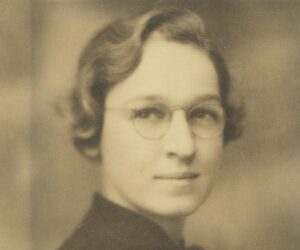

Virginia Apgar
Celebrating the Fourth of July gives us the opportunity to honor our DEMOCRACY. Always VOTE TO KEEP IT. THE SAME IS TRUE OF the RIGHTS OF WOMEN. We must fight to keep our rights, especially regarding birth control, pregnancy and birth. So if you are pregnant, planning to be or know someone who is…and if you believe in the rights of women, please read this post. It tells the story of one woman who was determined to help all others.
DR. ATUL GAWANDE
In his book, BETTER, physician & writer, Atul Gawande, reminds us that much of modern medicine did not just happen—it came to be through trial and error, through the deaths of others, and because of mistakes and triumphs that IS the history of medicine.
In BETTER, we meet ELIZABETH ROURKE. She is forty-one weeks pregnant, having contractions and an internist, on staff at Mass General. At 8:30 am, she reports to her OB that her contractions are 7 minutes apart, but is told to remain at home until her contractions are 5 minutes apart. Standard protocol. (this book was published in 2007).
Rourke is in medical school, had seen fifty births, delivered 4, and even watched one occur in a hospital parking lot. That birth occurred in winter, the baby emerging blue, crying, the nurse immediately covering him, racing him back into the hospital. Remembering this, Rourke packs her bag, and her husband drives her to the hospital. (More later.)
SOME HISTORY
In BETTER, Gawande tells the story of 21-year-old Princess Charlotte of Wales, who in 1817 had been in labor four days, struggling to deliver a nine-pound boy, stuck sideways in her womb, head too large for her pelvis. When the infant finally emerges, he is stillborn, Charlotte dying six hours later from hemorrhagic shock. Gawande relates her physician was reviled for not using forceps and in remorse for her death, shoots himself.
Gawande provides other birth history—writing that in 1933, the New York Academy of Medicine published a shocking study, 2,041 maternal deaths having occurred in New York City during the birthing process. Investigators found at at least two-thirds of those deaths were preventable, and that many physicians simply did not know what they were doing, missing signs, symptoms, incorrectly using forceps and often spreading infection. But midwives…midwives did better.
AN UPDATE ON the PATIENT, ELIZABETH ROURKE
Rourke’s pain has increased, she thinking she must be 7-8 centimeters. She is at 2. Her labor has stalled. Then at 2:43 AM she is at four centimeters. It’s been twenty-two hours, so the maternity staff gives Rourke an epidural. Because this is not a simple procedure, Gawande goes through the steps, explaining the risks: the mother’s heart rate dropping, the necessity for a bolus of fluid injections and ephedrine to increase and stabilize both hers and the baby’s blood pressure. Yes, the baby’s heart rate is being monitored constantly, showing decelerations during contractions, but then recovering. When necessary, Rourke (and thus the baby) are given extra oxygen by a nasal prong.
At 6 AM Rourke is a 4 centimeters. At 7:30 Dr. Alessandra Peccei comes on duty. Now Rourke is 6 centimeters dilated and 100% effaced. Baby is seven centimeters from crowning, head becoming visible at the opening to the vagina. As the hours progress, Dr. Peccei punctures the membrane of Rourke’s amniotic sac, waters flow, contractions pick up, but the baby does not move and the heart rate begins to drop. 120, 100, 80. When the doctor stimulates the baby’s scalp, the heart rate responds.
SEGWAY to: VIRGINA APGAR, the APGAR SCORE
Virginia Apgar was a doctor working in New York, a doctor with an idea, one that Gawande states is “ridiculously simple.” Apgar’s idea transformed childbirth and the care of newborns. And as Gawande writes, Virginia Apgar was an unlikely revolutionary for obstetrics, had never delivered a baby as a doctor, or as a mother. But she often sat with a patient having trouble and would say, “Tell Momma all about it.” Apgar was a surgeon, who then joined Columbia’s faculty as an anesthesiologist, becoming the second woman in the country to be board certified in anesthesiology, thus helping the practice create its own division, lifting it to be on equal ground with surgery.
Apgar was appalled by the lack of care of newborns. “Babies who were born malformed or too small or just blue and not breathing well were listed as stillborn, placed out of sight, and left to die. Doctors making the decision that a newborn was too sick to live.”
Apgar believed otherwise, this becoming her challenge…she did not have the authority, was not an obstetrician, and was also a female in a male world. Gawande writes: “So Apgar took a less direct but ultimately more powerful approach: she devised a score.”
The Apgar score—as it is now universally known, allowed nurses to rate the constitution of babies at birth, using a scale from zero to ten. An infant got two points if it was pink all over, two for crying, two for taking good vigorous breaths, two for moving all four limbs, and two if the heart rate was over a hundred. Ten points meant a child born in perfect condition. Four points or less meant a blue, limp baby.
RESULTS Of APGAR’S CREATION
Throughout the world, virtually every child born in a hospital is now given an Apgar score at one minute after birth; then again at five minutes after birth. It became a standard, a baby with a bad Apgar score at one minute could often be resuscitated, doctors, nurses providing warmth, physical touch, oxygen, thus helping that baby gain an excellent score at five minutes.
Results: neonatal units! The score also affected the management of childbirth. Spinal and epidural anesthesia were found to birth babies with better scores than general anesthesia. The prenatal ultrasound became a regular step used to detect delivery problems in advance.
Fetal heart monitors became standard. All these changes, procedures have produced amazing results. Gawande writes: “In the US today, a full-term baby dies in just one childbirth out of 500, and a mother dies in less than one in 10,000.”
FINAL THOUGHT: HOW DR. APGAR’S WORK HELPED MAKE BETTER OBSTETRICIANS
The Apgar Score changed everything, it being a practical way to calculate and give doctors immediate feedback as to how effective their care had been. The Score also changed the choices doctors made concerning how to do better! They poured over the Apgar results, wanting to encourage results that would make every doctor and nurse, from the most experienced to the novice, a better practitioner.
So what was the outcome for Elizabeth Rourke? She experienced almost 40 hours of labor, finally having a Cesarean section. Katherine Anne was born at seven pounds, fifteen ounces, brown hair, blue-gray eyes, and soft purple welts where her head had been wedged sideway, deep inside her mother’s pelvis. Her Apgars: 8 at one minutes, 9 at five minutes—nearly perfect.
MORE TO READ: Find more wonderful information about Health Care in Gawande’s books: BETTER: A Surgeon’s Notes on Performance, COMPLICATIONS: A Surgeon’s Notes on an Imperfect Science, BEING MORTAL: Medicine and What Matters in the End, and THE CHECKLIST MANIFESTO: How to Get Things Right
I’ve read them all.

11 Responses
I remember listening for this score when my children were born. Thanks for the history of it!
Yes, amazing. Every second in that process means something and we do not forget.
Thanks for your comment. Ah, the memories, Beth
Thanks for the information. I was in labor for 22 hours with my daughter. Finally, the doctor used forceps to pull her, with his foot balanced on the delivery table. She was almost 10 pounds and had an Apgar score of 3. She was rushed to the ICU and her score rose to 8. I didn’t get to touch her until the next day. It wasn’t the labor and delivery I had watched in the videos.
Dear Elaine, thanks for your comment. As mothers, we remember EVERY DETAIL. And yes, it wasn’t what you expected, but
thanks fo medicine they knew what to do. Sending a hug and best wishes to you and your daughter, Beth
ELAINE, thanks for sharing your story. These are moments in our lives that we will never forget.
Thank God for Virginia Apgar. I’m sure there are many unsung women in medicine who made it better for those in childbirth and their babies (not to mention other areas). How wonderful to celebrate Dr. Apgar now.
Yes! And she never had a child. FASCINATING.
How did I birth six babies without understanding what the doctors were saying around me? Absolutely fascinating, Beth!
Hi Diane. And congrats on having six children!! And your sense of humor grows! I think some doctors & nurses just take it for granted and don’t share that they are doing this wonderful way to keep track of the health of a baby immediately. We did chart it and it should be in an infant’s record. Thanks for posting, Beth
Post-partum women deserve a break. When pregnant and delivering a child, we trust the people around us.
Good hospitals know what to do.